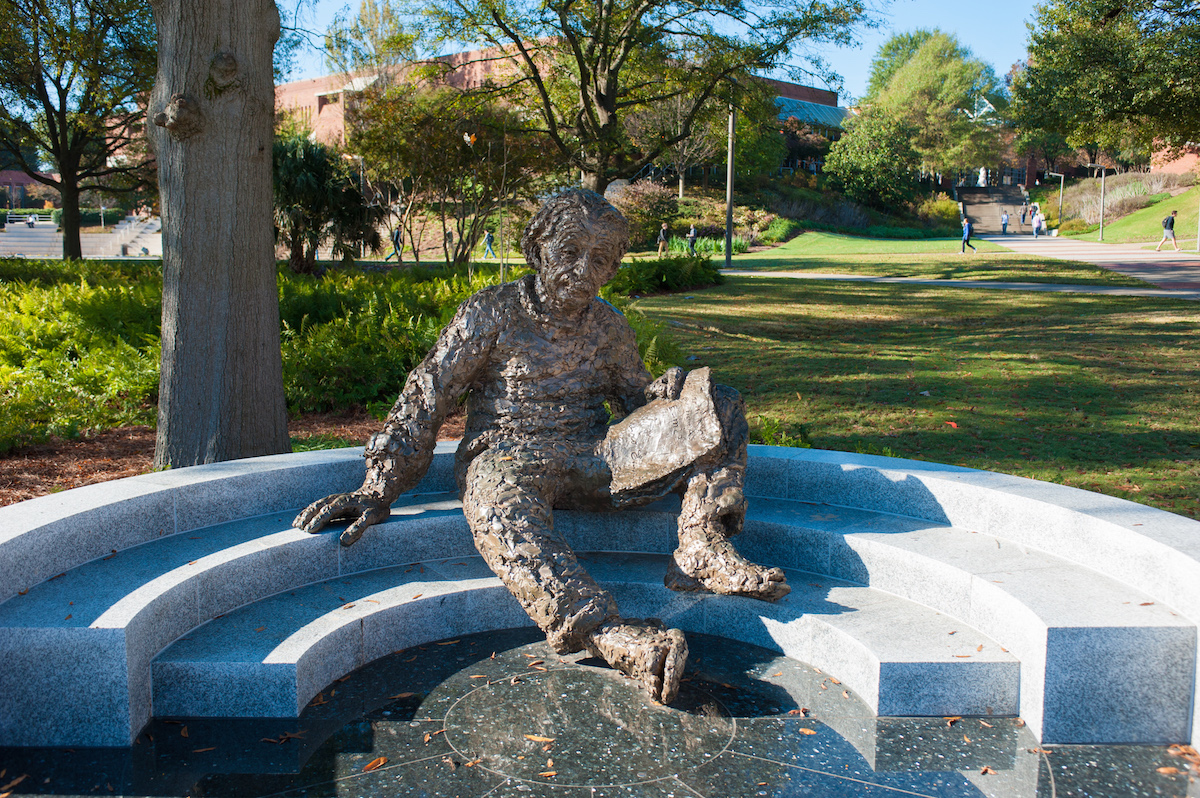
December 10 marks the 67th anniversary of the signing of the Universal Declaration of Human Rights. To commemorate the signing and in recognition of the recent installation of the Einstein monument, we were honored to receive a statement from Tech alumnus and former President Jimmy Carter.
Body
This fall, we were honored to install the third and final cast of Robert Berks’ Einstein monument here on the Georgia Tech campus. The homecoming weekend installation and dedication was the culmination of the generous support from donors and friends, and months of meticulous planning. Together with alumni, faculty and staff, students, and friends, we celebrated not only the importance of the arts at Tech, but also the inspired idea that brought Einstein to Tech, and its greater significance to us as a community.
Our Einstein is unique in that he gazes down to a black granite platform with the exact replica of the night sky over Atlanta on December 10, 1948 – the day of the signing of the Universal Declaration of Human Rights.
In celebration of the 67th anniversary of that signing and in recognition of the recent installation, we were honored to receive a statement from Tech alumnus and former President Jimmy Carter that read:
It is fitting that Albert Einstein’s likeness should be memorialized on the campus of the Georgia Institute of Technology, one of our nation’s finest centers of scientific inquiry.
By drawing our attention to the Universal Declaration of Human Rights, Robert Berks’ fine work reflects Einstein’s deep commitment to the cause of social justice. Warning of the consequences of unending warfare and oppression, he elevated human understanding, respect, and peace to paramount objectives.
The Declaration, like Einstein’s great works, represents the pinnacle of human achievement, for it promises to every person equal dignity and rights. Despite its never-ending nature, we remain nonetheless in constant pursuit of this goal. Like the scientist, we know that we can never consider the task complete. It is my hope that this monument will inspire all who visit to study the Universal Declaration of Human Rights and find ever more inventive ways to bring its precepts into reality.
We thank President Carter for his words and wisdom, and for his own legacy of social justice advocacy surrounding issues of human rights, health, conflict resolution and the betterment of health conditions in countries across the globe. His work has been an example to us all and we are proud to count him among our own.
I hope you have had chance to visit the monument. Einstein was so much more than one of the 20th century’s most brilliant and original physicists, he was also a tireless and highly visible advocate for peace and social justice. Before the Universal Declaration of Human Rights, other declarations and constitutions in history, including our own Declaration of Independence and the French Constitution, among others, were written by men and specified the freedom and rights of men. But, the Universal Declaration of Human Rights, led and championed by Eleanor Roosevelt, is clear and definitive in its inclusive verse – that “all human beings are born free and equal in dignity and rights.”
Georgia Tech is a science and engineering centric university in a city that was immortalized by the civil rights movement. This combination is unique, powerful and perfect to house this one-of-a-kind monument to Einstein. We offer our heartfelt thanks again to our friend Jim Barksdale for his passion, commitment and generosity. His support was instrumental to acquire the cast and helped to ensure Einstein will be enjoyed by this Georgia Tech community and the greater Atlanta community for generations to come.
- Rafael L. Bras
